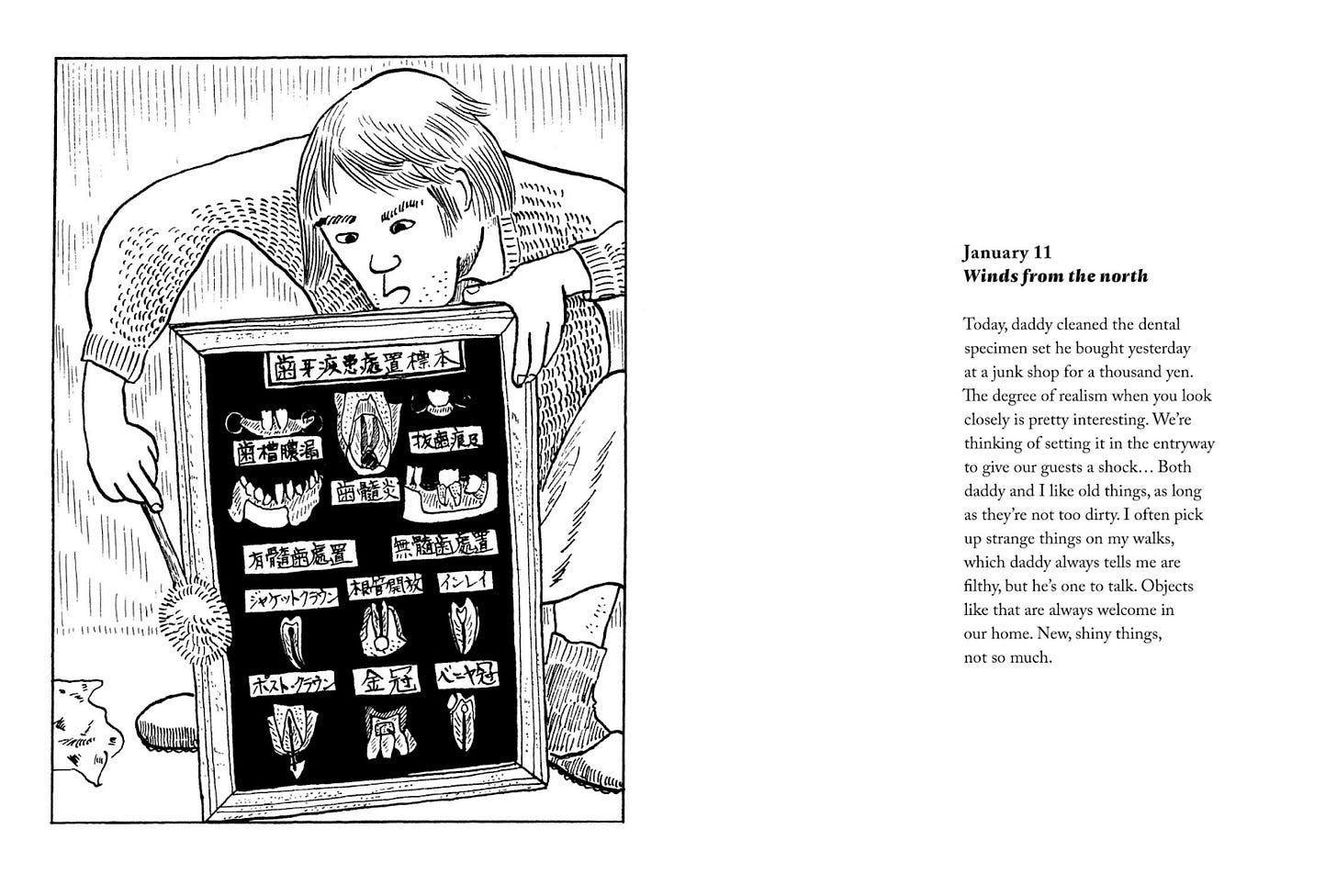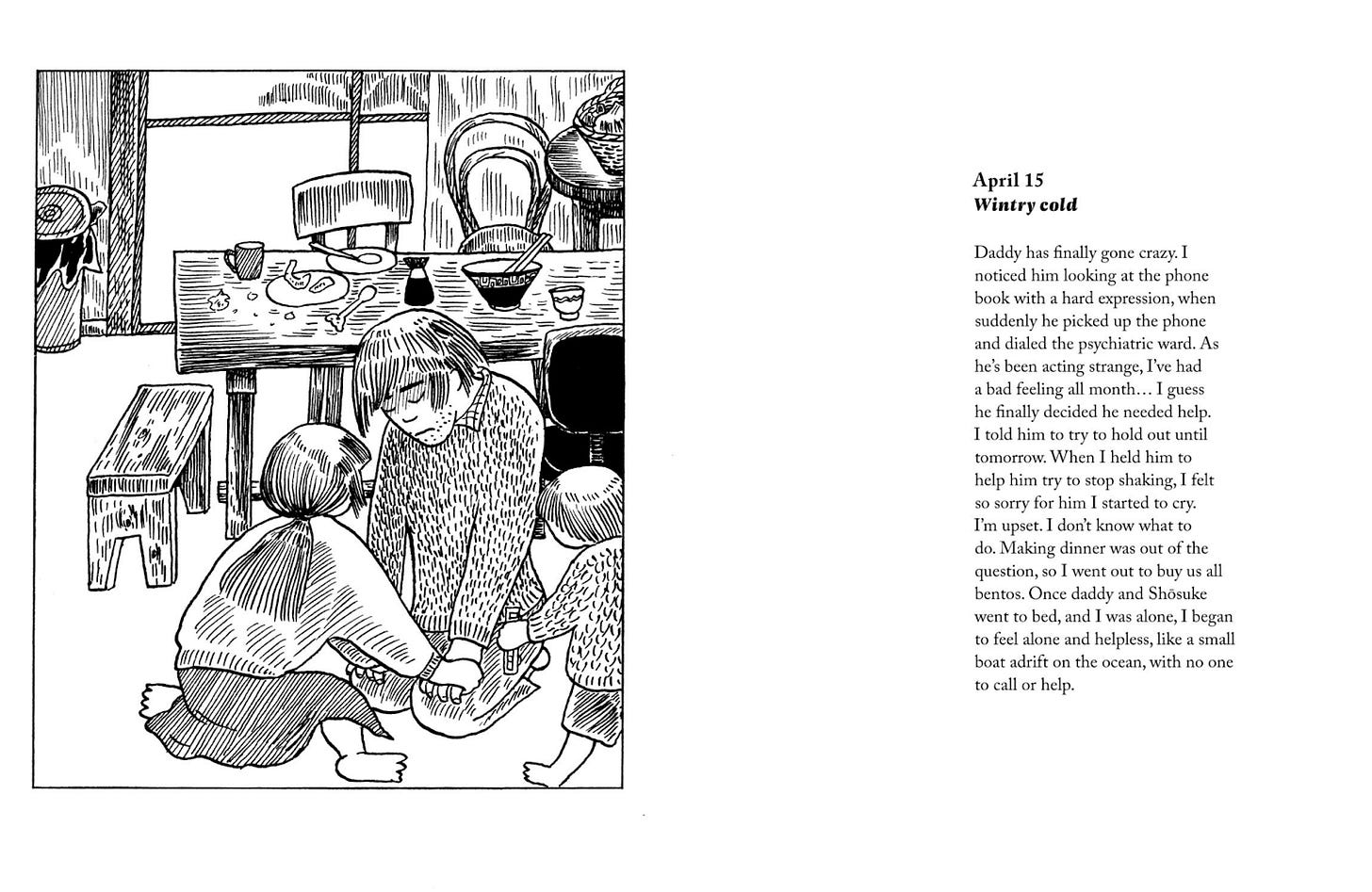Asynchronous Book Club: My Picture Diary
"Winds so strong they stung": Fujiwara Maki’s 1981 diary
My Picture Diary is a heartfelt and poignant account of Fujiwara Maki's life as a housewife and mother in 1981, set in the Tokyo area. Recently released by Drawn & Quarterly in its first English translation (from a 1982-published underground manga), the diary captures her day-to-day experiences. Consisting of written entries and illustrations, the book primarily focuses on her relationship with her four-year-old son, Shōsuke, and their shared routine. Maki's intimate reflections provide readers with a snapshot of her life, which, despite its seemingly unremarkable nature, has an inherent charm and relatability. Her portrayal of the joys and challenges of motherhood and family life resonates with readers and serves as a testament to the beauty in the ordinary.
As the diary progresses, a sense of unease grows when illness strikes the family. Maki's cold persists, and her husband's condition takes an unusual turn. He begins to have dizzy spells, is knocked over by a rush of cold air, and becomes increasingly bedridden. Maki's frustration is palpable when her husband fails to attend their son's enrollment ceremony: she writes “he couldn’t even get his ass out of bed for his son’s ceremony! The atmosphere at home has become suffocating.” Then she tries to see the best in the situation, noting that at least he managed to get up long enough to photograph them in front of a cherry tree in full bloom (the blooms, of course, hinting at how fleeting time is).
The diary entries eventually become sparse, with breaks that span months, as her husband's condition worsens and they seek medical intervention. The doctor administers a Rorschach Test, hinting at a possible psychological component to his illness–he later complains that he didn’t know what to say he saw in the ink splotches, since they all looked like female genitalia.
Tsuge Yoshiharu, Maki’s husband, a frequent (and disquieting) presence in her picture diary, was a famous manga creator, or mangaka. He created surrealist works to great renown, and is credited with starting the “I manga” movement, using autobiography in his stories. In Maki’s My Picture Diary, he emerges as a mercurial and somewhat mysterious figure, referred to as “Daddy.” Ultimately, though, this is Maki’s story. People may be drawn to the book because of her famous husband, but it’s the realistic depiction of the beauty and hardship found in an authentic life of a Japanese woman that leaves a lasting impression.
Questions for discussion:
Why are we drawn to reading about an average person's unextraordinary life?
Do you need to know who she is, or who her husband was to fully appreciate this diary? How might Tsuge Yoshiharu’s portrayal as “Daddy” in this memoir complicate or alter his public persona, i.e. how fans and the public see him?
How does Maki’s portrayal of motherhood and family life challenge or reinforce traditional roles in 1980s era Japan?
This comic started as a diary practice, which might be a personal project or an object intended to be shared. Who do you think the audience is for this graphic memoir? What scenes or entries give you that impression?
Illness comes up a theme throughout the diary, but somehow it remains at the edges, not the focal point. Is this memoir a form of graphic medicine?
Emotionally, how does the diary begin and end? What sense of Maki are you left with?
Drawing exercise:
Mimicking Maki’s diary format, make your own diary entry for the day. Include the date, a description of the weather, and a short description of what you did. Choose one thing to illustrate in a single panel.










I just came back to this after having read the book myself and realize I unintentionally did the drawing exercise you suggest and found myself thinking about the second discussion question a lot! I must’ve absorbed these months ago and they emerged finally once I’d read this book. 😆